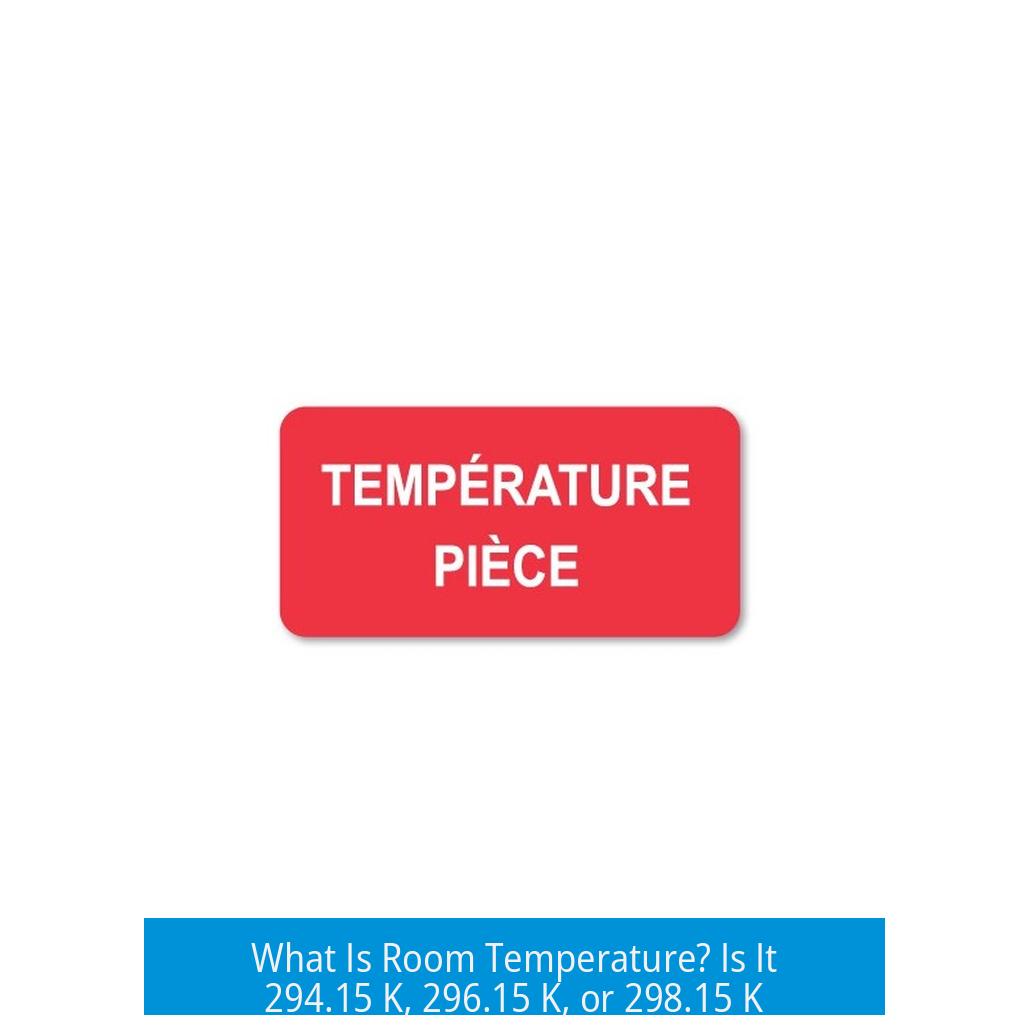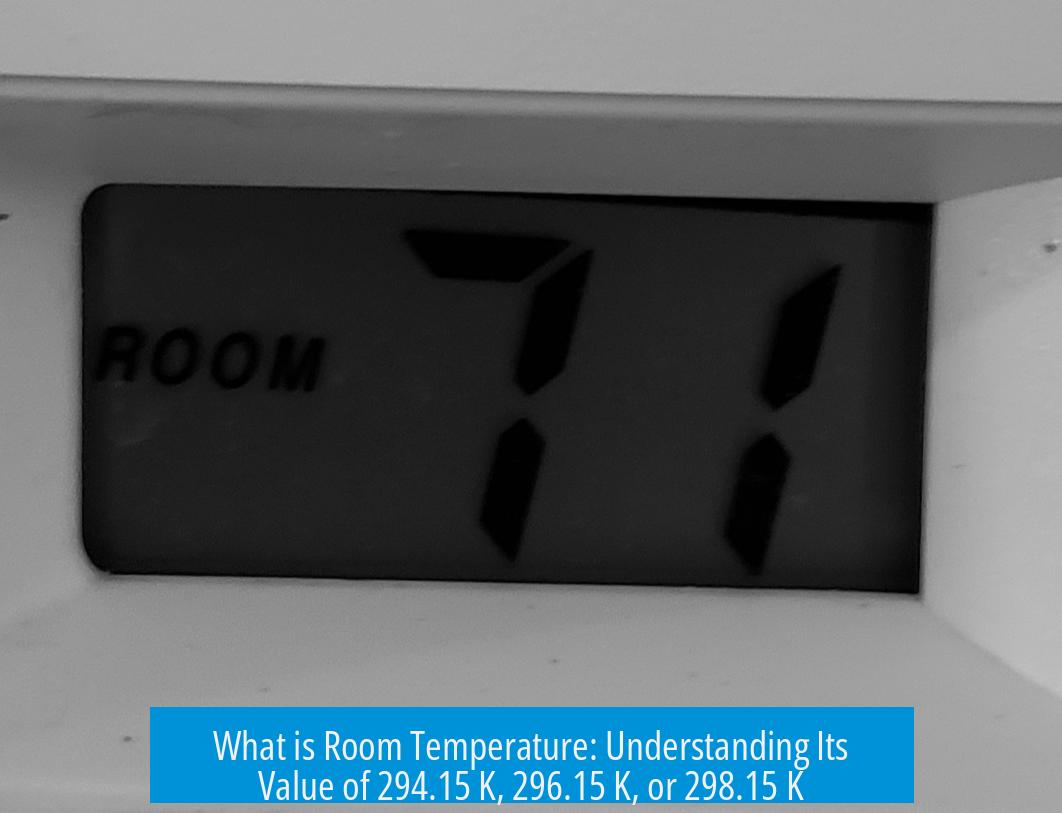What Is Room Temperature? Is It 294.15 K, 296.15 K, or 298.15 K?

Room temperature is generally accepted as 298.15 K (25°C) according to IUPAC standards. However, the exact value varies depending on geographical location, purpose, and context, ranging roughly between 294.15 K (21°C) and 298.15 K (25°C).
IUPAC Standard and Scientific Usage
The International Union of Pure and Applied Chemistry (IUPAC) defines room temperature as 298.15 K (25°C). This is the standard commonly used in many analytical laboratories and academic courses, particularly in chemistry. For example, analytical labs in Australia and academic courses often refer to 25°C as the default room temperature for experiments. This provides a consistent reference point for calculations and comparisons.
Regional Variations in Room Temperature
- United States: Typically around 67-68°F (about 19.5-20°C or 292.65-293.15 K) in practical settings.
- United Kingdom: Traditionally 18°C (291.15 K), though this value is sometimes considered too low due to modern heating.
- Canada: Divided: Eastern regions like Québec use ~22°C (295.15 K), while Western provinces assume ~25°C (298.15 K).
- Scotland: Room temperatures tend to be lower, aligning closer to the UK value of 18°C.
These differences reflect climate, building codes, and cultural norms. In some analytical or quality control labs, values as low as 18.9°C (292 K) are recorded routinely. Similarly, physical chemistry assignments may assume 20°C (293.15 K) to simplify calculations.
General Definition and Human Comfort Range
“Room temperature” can also describe a temperature range comfortable for humans, spanning roughly from 15°C (288.15 K) to 25°C (298.15 K). This wide range represents typical indoor conditions rather than a strict singular value. In culinary contexts, room temperature refers to food equilibrated at ambient indoor conditions.
Practical Considerations in Research
It is vital in scientific experiments to clearly specify the exact room temperature used, since it affects results, especially sensitive measures like kinetic isotope effects. The variability based on location and local standards means stating the numeric temperature avoids ambiguity when publishing data.
Summary of Key Points
- IUPAC standard room temperature is 298.15 K (25°C).
- Values vary regionally: 291.15 K to 298.15 K are common.
- Scientific contexts favor explicit temperature statements.
- Human comfort range spans approximately 288.15 K–298.15 K (15–25°C).
- Regional building practices and climates influence default norms.





Leave a Comment